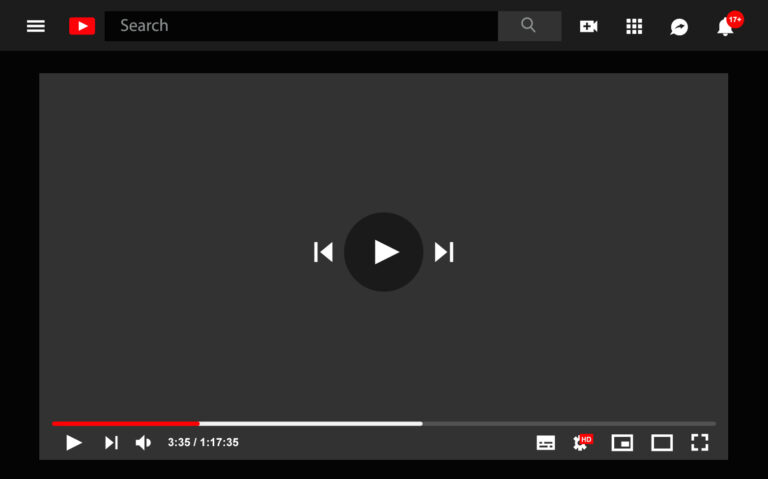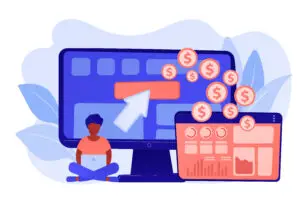YouTube is a prominent platform for content creators to share their videos and build a global audience. Many creators dream of turning their passion into a sustainable career, and monetization plays a crucial role in achieving this goal. YouTube’s ad revenue program has become a topic of intrigue and confusion for both aspiring creators and avid viewers.
In this blog post, we aim to demystify YouTube’s ad revenue by providing an overview of its basics and shedding light on how creators can monetize their content effectively.
YouTube’s Monetization Program Requirements
YouTube’s monetization program, known as the YouTube Partner Program (YPP), allows creators to earn money from their videos through advertisements.
To be eligible for monetization, creators need to meet specific criteria set by YouTube. These criteria include having at least 1,000 subscribers and 4,000 watch hours within the past 12 months, adhering to YouTube’s policies and guidelines, and residing in an eligible country or region.
Ad Formats on YouTube
YouTube offers different ad formats that creators can leverage to generate revenue.
- Pre-roll Ad. This is the primary ad format you may see, which plays before a video starts. These ads can be skippable or non-skippable, with skippable ads being more viewer-friendly.
- Mid-roll Ads. These ads appear in the middle of longer videos.
- Post video Ads. Ads that appear after your content as the video ends.
- Display Ads. Shown beside the video content in the “sidebar” above reccomended videos.
Ads can be skippable video ads that allow viewers to skip the ads after 5 seconds, non-skippable video ads that must be watched before a video can be viewed, and bumper ads that are short, non-skippable video ads that play for up to 6 seconds and must be watched before a video can be viewed. Bumper ads are turned on when skippable or non-skippable ads are turned on.
By utilizing a combination of these ad formats, creators can optimize / increase their revenue potential.
Learn More: Detailed information on YouTube’s ad format
Determining Ad Revenue
YouTube’s ad revenue is not solely dependent on the number of views a video receives.
Several factors influence the earnings potential of a video, including the demographic composition of the viewers, the engagement levels (likes, comments, shares), the length of the video, and the niche or industry of the content.
Furthermore, the CPM (Cost Per Thousand) rate, which represents the amount advertisers are willing to pay per 1,000 ad impressions, also impacts the revenue generated.
A simple calculation would be if your video had 10,000 views and advertisers are willing to pay an $8 CPM, your video would make $80 for those 10,000 views. Of course there’s other calculations involved like how many ads per video did you use…that can change these numbers.
While YouTube does not disclose the exact CPM rates, they vary based on the advertiser’s budget, what niche your channel / video is in (some niches just pay more), bidding competition, and video category.
YouTube’s Revenue Sharing Model
YouTube operates on a revenue sharing model, where creators receive a portion of the revenue generated from ads displayed on their videos.
The exact percentage varies depending on various factors, such as the country where the ad was viewed, the ad type, and the pricing set by advertisers.
Generally, creators receive around 55% of the ad revenue, while YouTube keeps the remaining 45%. This model encourages creators to consistently produce quality content while benefiting from the platform’s vast audience.
Additional Revenue Streams Through YouTube
While ad revenue is a significant part of monetization on YouTube, content creators have several other avenues to generate income. These include:
- Channel Memberships. Creators can offer channel memberships to their subscribers, providing exclusive perks and benefits in exchange for a monthly fee.
- Merchandise Shelf. YouTube enables creators to showcase their merchandise directly below their videos, allowing viewers to purchase branded products.
- Super Chat and Super Stickers. During live streams, viewers can make monetary contributions through Super Chat and Super Stickers, highlighting their messages and supporting their favorite creators simultaneously.
- Sponsored Content and Brand Deals. As creators build a substantial following, they often attract brand collaborations and sponsorships, allowing them to earn additional income.
All of these programs require your channel to already be accepted into the YouTube Partner Program (YPP) and some may even require you to have more subscribers like promoting merchandise, which requires 20,000 subscribers.
You can also go off of YouTube to set up some of these same options for your viewers. For example, as an alternative to the Channel Membership option, you can set up Patreon to offer your monthly membership perks.
Check out this post on more ways to monetize your YouTube channel
Optimizing Monetization Efforts
To maximize monetization potential on YouTube, creators should focus on several key aspects:
- Consistency and Quality. Consistently producing and uploading high-quality content that engages viewers is crucial to growing a loyal audience and attracting advertisers.
- Audience Engagement. Encouraging viewers to like, comment, and share videos increases engagement, which in turn boosts ad revenue potential. This can be spoken within the videos or you can use visual elements like lower thirds to remind viewers to subscribe. Responding to comments and engaging with the audience helps foster a sense of community and encourages viewers to stay connected.
- Search Engine Optimization (SEO). Optimizing video titles, descriptions, and tags with relevant keywords helps improve discoverability. This increases the chances of attracting more viewers and generating higher ad revenue. SO make sure you thoroughly fill these out, but don’t over do it.
- Diversify Content. Experimenting with different types of content, such as tutorials, vlogs, or niche-specific videos, can attract a wider range of viewers and increase overall watch time. The longer viewers stay engaged, the more ads they are likely to encounter, resulting in higher revenue. Plus it also helps when you’re just starting out, making a variety of video types will help you figure out which one works for your audience.
- Collaborations and Cross-Promotion. Collaborating with other creators and cross-promoting each other’s content introduces new audiences to your channel. This exposure can lead to increased subscribers and views, thereby boosting ad revenue potential.
- Stay Up-to-Date with YouTube Policies. YouTube frequently updates its policies and guidelines, and staying informed about these changes is essential. Adhering to the platform’s policies ensures that your content remains monetized and helps maintain a positive relationship with advertisers.
- Analytics and Insights. Utilize YouTube’s analytics to gain insights into your audience demographics, watch time, and engagement levels. This data can help identify trends, optimize content strategy, and make informed decisions to improve ad revenue performance.
Monetizing content on YouTube through ad revenue is an achievable goal for creators who meet the eligibility requirements and invest time and effort in producing high-quality, engaging content. Understanding the basics of YouTube’s monetization program, exploring various ad formats, and diversifying revenue streams can significantly impact your earning potential.
While ad revenue is an essential aspect of monetization, creators should also explore other avenues YouTube has to offer such as channel memberships, merchandise sales, and sponsored collaborations to maximize their income.
Remember, success on YouTube requires a combination of consistent content creation, audience engagement, and staying informed about the platform’s policies and changes. By implementing these strategies and adapting to the evolving landscape of online content creation, you can demystify YouTube’s ad revenue and turn your passion into a sustainable and rewarding career.







